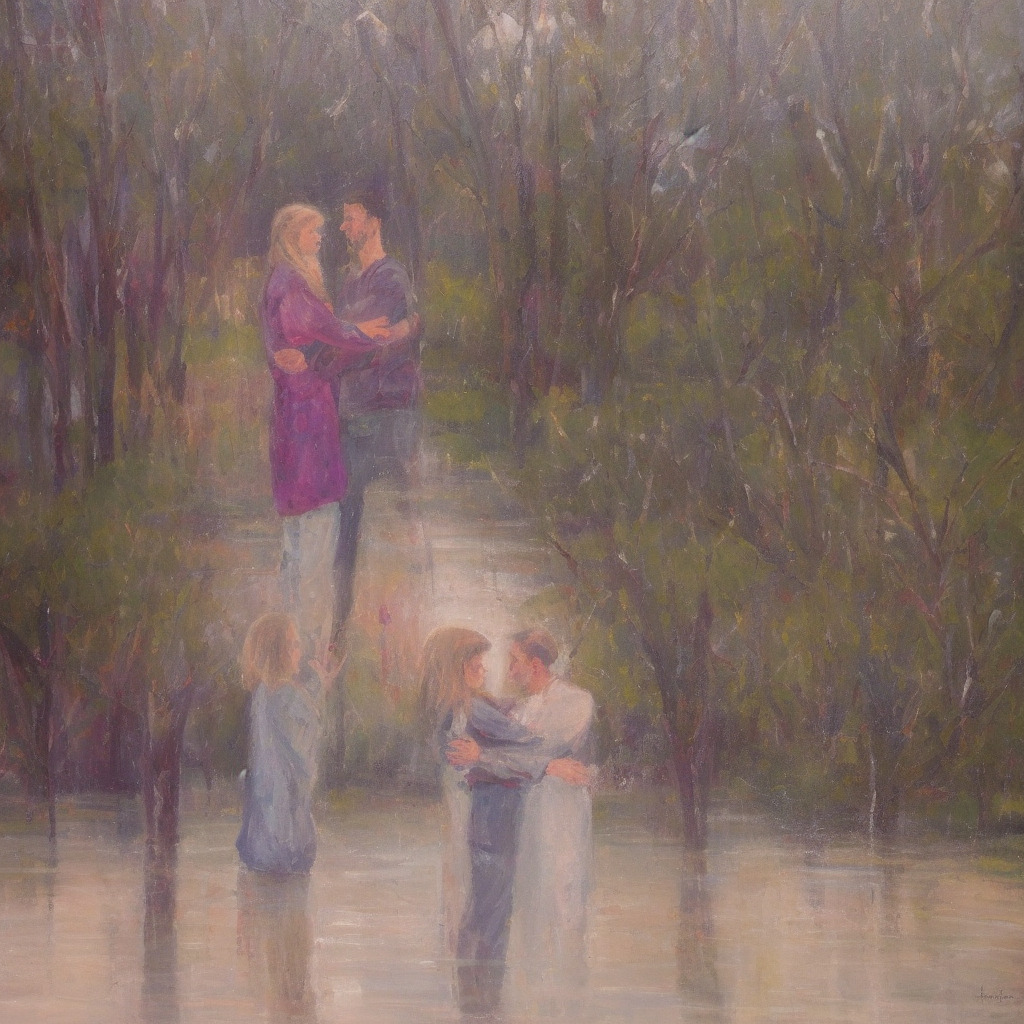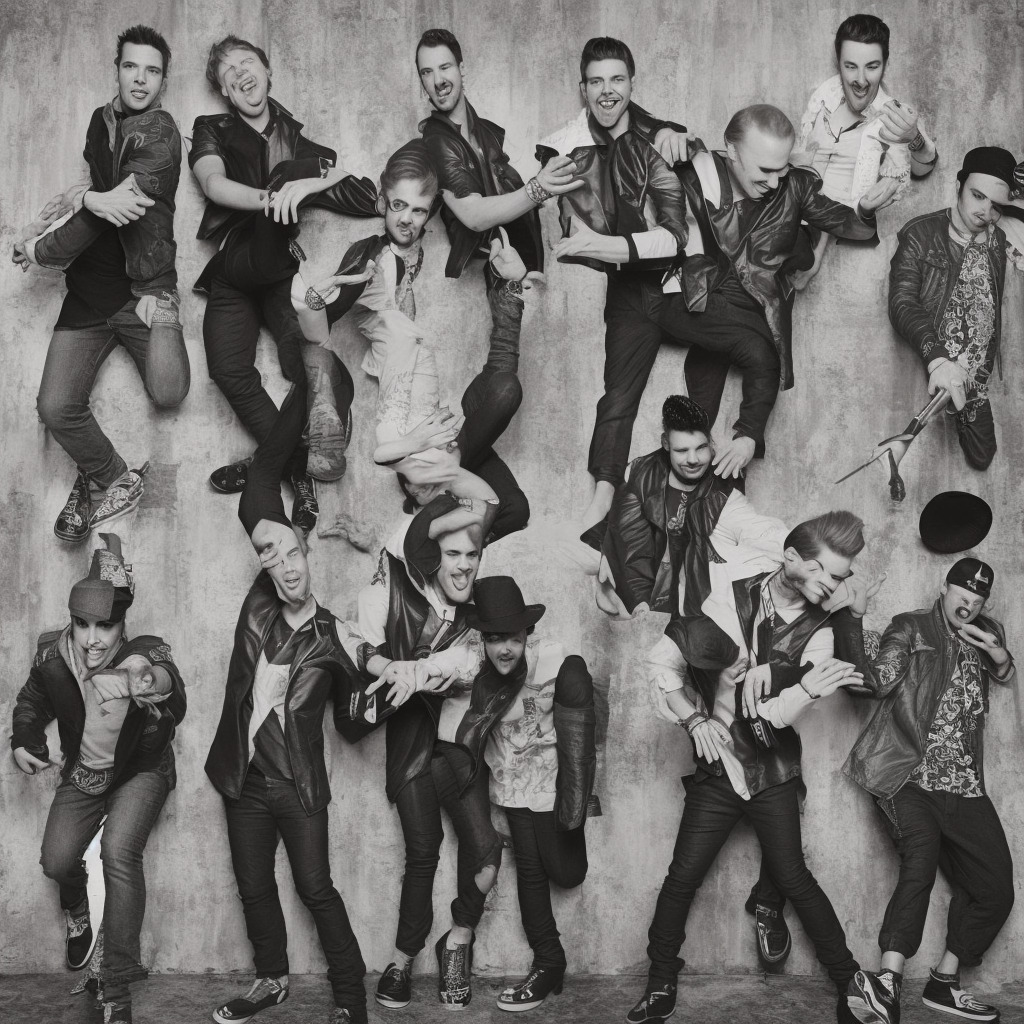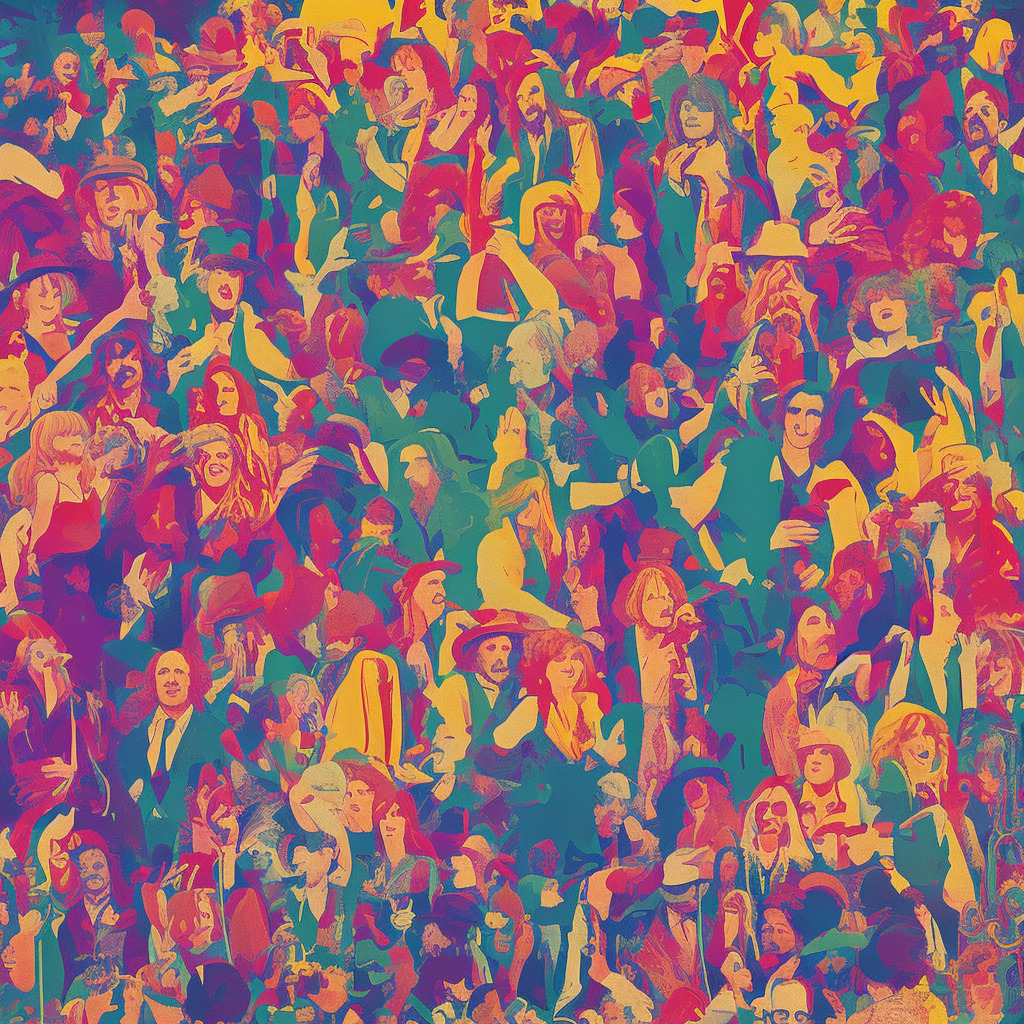Madonna: A Pop Icon’s Rise and Influence
In the early 1980s, Madonna emerged as a transformative force in the music industry. ‘Borderline’, one of her signature hits, highlights her rise to fame and her unique approach to music and self-expression.

Madonna, often referred to as the ‘Queen of Pop’, is a cultural icon whose influence has extended beyond music and into fashion, film, and social movements. In the early 1980s, as she was establishing her career, Madonna was already a force of innovation and self-expression, challenging societal norms and pushing the boundaries of the music industry. Her singles from this era, such as “Borderline“, were instrumental in developing her image and introducing her unique blend of pop, dance, and provocative themes to the world.
Growing up in Bay City, Michigan, Madonna Louise Ciccone moved to New York City in 1978 to pursue a career in dance but soon ventured into music, forming several bands including the Breakfast Club and Emmy. Her early experiences taught her independence and resilience, skills she would later use to break into the male-dominated music industry. The release of her self-titled debut album in 1983 was a pivotal moment, with “Borderline” becoming one of her signature songs and paving the way for future successes.
The release era of “Borderline” coincided with a transformative period in Madonna’s career. The song’s success on the charts established her as a staple on MTV and in clubs across the globe. Known for her collaboration with talented producers like Nile Rodgers and Stephen Bray, Madonna’s music was marked by a distinctive pop style that was both innovative and accessible. “Borderline” stood out due to its catchy melody and relatable lyrics, solidifying her status as a multi-talented artist who was here to stay.
Stephen Bray: The Musical Architect Behind ‘Borderline’
Explore the creative genius of Stephen Bray, the composer behind Madonna’s ‘Borderline,’ and learn how his unique style and partnership with Madonna crafted an enduring musical masterpiece.

Stephen Bray, the mastermind behind the composition of Madonna’s hit song “Borderline,” is a celebrated figure in the music industry known for his dynamic approach to sound and melody. Born and raised in Detroit, Michigan, Bray’s foray into music was heavily influenced by the Motown sounds that characterized his hometown. His musical journey began early, intensifying when he moved to New York City, where he enrolled at the School of Visual Arts. Despite studying film, his passion for music prevailed, propelling him into a career that would later see him collaborate with some of the biggest names in the industry.
Bray’s musical style is a vibrant tapestry of pop, R&B, and dance genres. Heavily influenced by the rhythms of Motown and the pop sensibilities of 1980s New York, his compositions are marked by catchy hooks and infectious beats. Bray’s work often reflects a seamless blend of soul and synth-pop elements, creating a sound that is both unique and timeless. His influences range from the classical compositions of Stravinsky to the bold, innovative styles of contemporary R&B artists, which are evident in his work with Madonna.
Stephen Bray’s collaboration with Madonna is one of the most notable of his career. Their partnership began in the early 1980s, marking a significant turning point for both artists. Bray’s involvement in “Borderline” was integral; he crafted a melody that perfectly encapsulated the emotional essence of the song, blending uplifting rhythms with poignant undertones. His ability to translate complex emotions into simple yet profound musical narratives is a testament to his skill and artistry. The intricate interplay between the lyrics and music in “Borderline” showcases Bray’s knack for capturing sentiment through sound, a talent that has greatly contributed to the song’s enduring appeal.
Notable Recognition Beyond Borders
“Borderline” hasn’t received major awards but is praised for its cultural impact, covered by various artists, and featured in films, TV, and games.

“Borderline” by Madonna marked a significant point in her career, notably for its memorable melody and innovative music video. Though the song itself did not win major awards, it was crucial in establishing Madonna as a standout pop artist of the 1980s. One of its core accolades was its role in expanding her global fanbase and cementing her status in the music industry as a trailblazer.
The song has seen its fair share of covers by various artists who have paid homage to its classic pop sound. Among the notable covers, pop bands and indie artists alike have reimagined “Borderline,” showcasing its versatility across different musical genres. These interpretations not only honor Madonna’s original work but also introduce the song to new audiences, ensuring its enduring legacy.
“Borderline” has also enjoyed appearances in several films, TV shows, and even video games, often used to evoke the iconic 80s vibe. Its inclusion in these media projects highlights its cultural significance and broad appeal. As each new generation discovers the song through diverse channels, “Borderline” continues to be celebrated for its authentic representation of Madonna’s early career and timeless musical influence.
Chart Triumph: The Rise of ‘Borderline’
Borderline,’ released in 1984, marked Madonna’s breakthrough on the Billboard Hot 100, reaching number 10 and remaining for 30 weeks, solidifying her as a pop icon.

Released in February 1984, ‘Borderline’ by Madonna marked a significant turning point in her career, achieving remarkable chart success that catapulted her into the limelight. Initially debuting modestly, the song began a steady ascent up the charts, reflecting its growing popularity. It eventually peaked at an impressive number 10 on the Billboard Hot 100 chart in the United States, staying on the chart for an enduring 30 weeks. This achievement was notable, especially considering the competitive music landscape of the 1980s, punctuated by legendary artists and impactful releases.
Compared to other tracks at the time, ‘Borderline’ held its own among chart-topping contenders. Its unique sound, blending pop and dance elements, resonated with a wide audience, making it a standout track in Madonna’s early repertoire. This single contributed to establishing her as an emerging force in the music industry, illustrating her ability to produce hits that not only captured audiences but also dominated the airwaves.
‘Borderline’ was both a breakthrough and a confirmation of Madonna’s potential. As her fifth single, it built on the success of its predecessors, further cementing her place in the pop music elite. The song’s chart performance provided a strong foundation for Madonna’s trajectory, paving the way for subsequent blockbuster hits. Not only did it enhance her credibility as a pop icon, but it also demonstrated her broad appeal across demographics. The enduring legacy of ‘Borderline’ continues to influence artists today, a testament to its cultural and commercial impact.
Exploring Visual Artistry: The “Borderline” Music Video
The “Borderline” music video, directed by Mary Lambert, showcases 1980s visuals and themes of love and empowerment, boosting Madonna’s global appeal.

Madonna’s “Borderline” music video is a quintessential piece of 1980s pop culture, vividly capturing the era’s visual style and thematic elements. Released in 1984, the video was directed by Mary Lambert, who would go on to helm several more of Madonna’s videos. This creative collaboration played a significant role in crafting Madonna’s emerging image as a boundary-pushing pop icon.
Thematically, the “Borderline” video delves into the concepts of love, empowerment, and identity, echoing the song’s lyrical themes. It illustrates a narrative of a young woman caught between emotional dependency and self-liberation, set against a backdrop of colorful, vibrant cityscapes. The imagery is a mix of street scenes, playful fashion, and Madonna’s dynamic energy, contributing immensely to her enigmatic persona.
The music video significantly contributed to the song’s popularity, making Madonna a staple on MTV and boosting her appeal worldwide. Critics appreciated its fresh and energetic approach, noting its effective amalgamation of storytelling and style. Mary Lambert’s direction, along with Madonna’s captivating performance, received accolades for their roles in transforming the medium into a crucial part of music marketing. Over time, “Borderline” has gained a reputation as a key video in defining 80s pop visuals.
Decoding the Musical Anatomy of ‘Borderline’
Explore the intricate musical structure of Madonna’s ‘Borderline’, a pop classic that combines catchy melodies with lush instrumentation, marking a significant evolution in her early career.

Madonna’s ‘Borderline’ is a quintessential piece from her early career that showcases a meticulous crafting of pop elements. The song is written in the key of D major, setting an upbeat yet emotionally resonant tone. It follows a typical pop structure with a verse-chorus-verse-chorus-bridge-chorus format, which contributes to its catchy and memorable appeal. The tempo is moderate, clocking in at around 120 beats per minute, allowing the song to straddle the line between ballad and dance track, which was a signature move that helped cement Madonna’s versatility as an artist.
In terms of chord progressions, ‘Borderline’ uses a series of ascending and descending patterns that create a feeling of tension and release, mirroring the lyrical theme of emotional conflict. The melody is predominantly stepwise, with occasional leaps that add expressive emphasis at key moments, especially during the chorus. Harmonically, the song employs syncopated rhythms that create a sense of forward momentum, drawing the listener into its sonic landscape.
The instrumentation in ‘Borderline’ is a harmonious blend of acoustic and electronic elements. Synthesizers, a staple of 1980s pop, dominate the arrangement, providing a lush backdrop that is accented by bass guitar and drums, creating a funky yet polished sound. Notably, the use of a synthesizer riff throughout the song gives it a signature hook that is immediately recognizable. In the larger context of Madonna’s discography, ‘Borderline’ is indicative of her evolving sound, blending pop-rock and dance with introspective lyrics. This song marked a significant shift towards more mature themes and complex musical arrangements in her career.
Recorded at Sigma Sound Studios in New York, the song was produced by Reggie Lucas and highlighted Madonna’s collaboration with renowned producer John “Jellybean” Benitez, who provided additional remix production. Anecdotes from the recording sessions suggest Madonna’s strong influence was gradually shaping her music, a precursor to her future role as a producer. ‘Borderline’ thus stands as a pivotal song, bridging her early bubblegum pop with the more nuanced textures of her later works.
Unpacking the Emotional Depth of ‘Borderline’
Explore the emotional and thematic depth of Madonna’s ‘Borderline’, a song that captures the tumultuous pull between love and personal freedom. Delve into its storytelling, literary devices, and emotional impact, revealing why it remains relatable to many.
I don’t want to be your prisoner, so baby, won’t you set me free
Stop playing with my heart
Finish what you start
When you make my love come down
If you want me, let me know
Baby, let it show
Honey, don’t you fool around
Just try to understand (understand)
I’ve given all I can
‘Cause you got the best of me
Borderline
Feels like I’m going to lose my mind
…
******* This Lyrics is NOT for Commercial use *******
 Lyrical Themes and Messages: At its core, ‘Borderline’ by Madonna navigates the complexities of romantic entanglement. The lyrics vividly capture the feelings of confusion, frustration, and yearning associated with an unsteady relationship. Madonna’s insistence on not being a ‘prisoner’ in love speaks to a desire for emotional independence. The song encapsulates the struggle for autonomy within a romantic context, a theme that resonates with anyone who’s ever been caught between staying or leaving in a tumultuous relationship.
Lyrical Themes and Messages: At its core, ‘Borderline’ by Madonna navigates the complexities of romantic entanglement. The lyrics vividly capture the feelings of confusion, frustration, and yearning associated with an unsteady relationship. Madonna’s insistence on not being a ‘prisoner’ in love speaks to a desire for emotional independence. The song encapsulates the struggle for autonomy within a romantic context, a theme that resonates with anyone who’s ever been caught between staying or leaving in a tumultuous relationship.
Narrative and Storytelling: The narrative in ‘Borderline’ is a first-person account, providing an intimate glimpse into Madonna’s emotional state. This perspective allows listeners to connect personally with the story, as if they are living the emotional turmoil themselves. This first-person narrative style enhances the song’s impact by making the frustrations and desires expressed by the protagonist more immediate and relatable. It’s as if Madonna is confiding her innermost feelings directly to us.
Use of Literary Devices: Madonna employs different literary devices to enhance the song’s emotional impact. The use of repetition with words like ‘borderline’ amplifies the sense of desperation and emotional confinement. The song is rich with metaphors; phrases like ‘feels like I’m going to lose my mind’ illustrate the overwhelming emotions that come with love’s uncertainties. These devices not only embellish the lyrics but also help in conveying the protagonist’s internal struggle.
Emotional Impact and Relatability: The lyrics of ‘Borderline’ are masterfully crafted to evoke a spectrum of emotions—confusion, frustration, longing—that resonate with listeners universally. This relatability is a significant factor in the song’s enduring appeal. Whether it’s the experience of unreciprocated love or the pursuit of personal freedom within relationships, Madonna’s lyrics capture emotions that are both personal and universally understood.
🎶 Did you know? Madonna’s Borderline was her first top 10 hit on the Billboard Hot 100, staying for 30 weeks! 🌟 #80sPop #QueenOfPop #MadonnaMagic #TriviaTime https://bit.ly/4eho4r7
Click to Tweet







